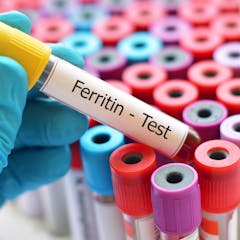
Articles on Blood test
Displaying 1 - 20 of 30 articles

Here’s how we design a fairer pathology system, fit for the 21st century, with no out-of-pocket costs or the public.

Your blood contains a wealth of information about the state of your health. Analyzing the levels of each component is an important part of diagnosis.

For the majority of patients, blood collections are not a problem, just a minor inconvenience. Others may feel uneasy and anxious about the process.

These blood tests results need care when interpreting, and they can not they predict how the disease will affect each person.

Lab testing provides doctors with essential information to help them diagnose and treat disease. Here’s what happens behind the scenes after you roll up your sleeve for a blood draw.

Multicancer early detection tests are among the priorities of the Biden administration’s Cancer Moonshot. The tests show promise, but questions remain about when and how to use them.

Your blood can hold a record of past illnesses. That information can reveal how many people have had a certain infection – like 58% of Americans having had COVID-19 by the end of February 2022.

Blood samples help doctors know whether a treatment is effective or not – and this device can provide this information almost instantly.

Proposals in NSW to force someone who spits at or bites a frontline worker to be tested for HIV and other blood-borne viruses are a real problem - for workers and the public.

We show that minute amounts of cancer DNA can be detected in blood more sensitively than ever before.

Expanding coronavirus testing is one of the most important tasks public health officials are tackling right now. But questions over accuracy of the two main types of tests have rightly caused concern.

The science is far from certain, but it appears at least a proportion of people who have had COVID-19 will be protected from another infection – at least initially.

After your body fights off an infection, antibodies remain in your blood. Two researchers explain how tests identify these antibodies and what the data can be used for.

In some communities, over a quarter of the children were misclassified as iron replete whereas they were iron deficient.

We have no reliable way of knowing which patients’ cancer will return after surgery, so often chemotherapy is given to mop up any remaining cancer cells that may have gone undetected.

Researchers have discovered some blood markers that indicate melanoma. Here’s what has to happen for the test to reach clinics.

From broken limbs to blood tests, hospital visits can cause unnecessary pain for children. An emergency care pediatrician offers seven easy strategies for parents to lessen this pain.

Feeling tired and out of energy? Talk to your GP about checking your iron level.

Antibiotics are wrongly being prescribed for infections where they won’t work and cutting this down could help combat resistance. But change isn’t as easy as just providing the means.

Almost half of all needle sticks in a hospital may be unnecessary, a recent study shows. There’s a way to be done with one, thus avoiding the pain of extra sticks.
